When the topic “Maths” is mentioned in conversation among adults, including teachers, many of them moan, “I hate maths. It’s too abstract. I could never understand it. I can’t see the point in it.”
I think it is a sad situation that many such adults were turned off maths in school by teachers who didn’t introduce them to the beauty of maths, who didn’t teach maths in the context of real-life purposes and whose pedagogical kit bag was entirely filled with worksheets of meaningless and endless algorithms to complete.
I am one of those adults too. In my final years of high school I had a “teacher” who could do the math but couldn’t teach the math; couldn’t explain the why or the how, or any of the steps required to achieve understanding. Maths became an impenetrable forest of meaningless algorithms, formulae and theorems.
As both a parent and teacher of young children, I was determined to not be an instrument of math torture. Granted this may be easier with young children than it is with older students, but I’m sure there are still ways of making maths fun and meaningful in high school classrooms.
The suggestions in this article provide parents of young children with ways of finding maths in everyday contexts and incorporating mathematical learning effortlessly into holiday activities. Of course, the activities are of benefit at any time, not just during the holidays!
If you don’t have young children to inspire, or inspire you, please move on to the end of the article for some suggestions to excite your own interest in maths!
Although the word “counting” appears in the title, it is important to remember that maths is not just counting.
The strands of maths as described by The Australian Curriculum include:
- Number and place value
- Patterns and algebra
- Measurement and geometry
- Probability and statistics
My list includes just a few suggestions for each of those strands to get you started. Need I say there is an infinite number of possibilities?
25 ways to keep children thinking mathematically during the holidays:
Number and place value
- Count items e.g. birds in the sky, shells collected from the beach, people for lunch, steps in a staircase, windows on a house, seats in a bus . . .
- Count out the cutlery required for each person at dinner
- Include your child in shopping activities by helping them to:
- Recognise the coins and notes
- Count the value of coins and notes
- Predict whether they have enough money to purchase an item, and whether there will be change
- Tender the money in payment for an item
- When your child is sharing e.g. the biscuits, balloons or slices of fruit, ask them to:
- Predict if there will be enough for everyone to have one, or more than one each
- Share out the items, allocating the same number to each
- Determine if there are any left over and what to do with them
- Use terms like half and quarter correctly, e.g. when cutting apples, oranges, sandwiches, pizza, to indicate pieces of equal size
- Play games that involve counting, e.g. counting the number of skips, balls in hoops, pins knocked down or dice games like snakes and ladders that require adding as well as number recognition and counting
- Make up number stories e.g. “We had five apples in the bowl. I ate one, and you ate one, how many are left?” “
- Read books with number concepts e.g. Pat Hutchins The Doorbell Rang, Eric Carle Rooster’s off to see the world or Kim Michelle Toft One Less Fish
Patterns and algebra
- Use items to make patterns e.g. sort and create a pattern from shells collected at the beach, building blocks or toy cars
- Look for patterns in the environment e.g. fences, tiles, walls and window, zebra crossings
- Decorate cards and drawings with a patterned frame
- Make gift wrapping paper by decorating with potato prints or stamp patterns
Measurement and geometry
- Include your child in cooking activities and allow or support them to:
2. A child’s understanding of volume and capacity can be developed when they:
- pour glasses of water from the jug and discuss terms such as enough, full, empty, half or part full, more, less
- pour from one container into another of a different shape to compare which holds more and which holds less
3. Scales can be used to compare the mass of different items or quantities e.g. compare an apple and an orange, measure the mass of butter required for a recipe
4. Measuring length can be included by:
- measuring and comparing height
- cutting a length of string to tie a package
- measuring who is closest to the jack in a backyard game of lawn bowls
5. Use the calendar to
- Learn the names and sequence of days in the week or months in the year
- count the passing days or the number of days until an event
6. Identify shapes in the home and environment e.g.
- 2D shapes: tiles on floor and walls, shapes of windows, sections of footpath
- 3D shapes: cereal boxes (rectangular prism), balls (sphere), bottles or cans (cylinder), dice (cube)
7. Play games that involve shapes e.g. jigsaw puzzles, tangrams
8. Talk about directions e.g. left, right, forwards, backwards and follow directions on a grid
9. Play games that involve directions and movement in space e.g. battleship, Hokey Pokey, Simon Says, snakes and ladders, ludo
10. Read and discuss books that include measurement concepts e.g. Pamela Allen: Who Sank the Boat? (volume); Eric Carle: The Very Hungry Caterpillar (days of the week) and The Bad Tempered Ladybird (time); Penny Matthews and Andrew McLean A Year on our Farm (months and seasons); and for looking at places on a map Mem Fox Sail Away The ballad of Skip and Nell or Annette Langen & Constanza Droop Letters from Felix
Probability and statistics
- When discussing the weather or desired activities include the language of probability e.g. possible, certain, likely, unlikely, impossible
- Encourage children to collect data about family or friends by asking yes/no questions e.g. do you like swimming, or making a graph of the family’s favourite colour or meal.
- Play games with spinners and dice and talk about the likelihood of spinning or throwing a particular number
This list is really just a beginning. I’m sure you will add many more suggestions of your own.
For your convenience, the list is available to download FREE in my TEACHERSpayTEACHERS store.
As promised I will leave you with a few suggestions to spark your own interest in and love of maths. Be sure to check them out:
These are must listen TED talks by Arthur Benjamin:
The magic of Fibonacci numbers
and A performance of “Mathemagic”
And a fascinating one for the Christmas season “The 12 days of Pascal’s triangular Christmas” by Michael Rose on The Conversation.
If you want to delve a bit deeper, here are some interesting reads to get you started:
Charles Seife Zero: The Biography of a Dangerous Idea
Mario Livio The Golden Ratio: The Story of PHI, The World’s Most Astonishing Number
Rozsa Peter Playing with Infinity: Mathematical Explorations and Excursions
I listened to the biography of zero on audiobooks this year. It was a fascinating listen.
What do you think of maths? Do you love it or hate it?
I hope you enjoy your adventures in maths! A world of possibilities awaits!

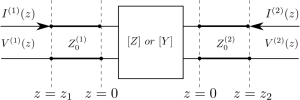
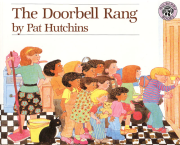

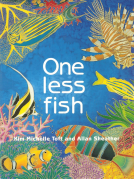



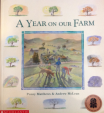
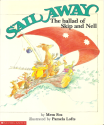
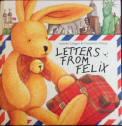
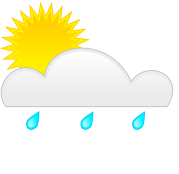

Hi Nor, what a great post. I like the way you demonstrate that maths is all around us. I certainly agree! A few years ago I read a great book titled ‘Homework for Grownups’ which is a very brief overview of key curricula, directed at adults who want to be able to help their kids (and others like me who find it fun to read these things). It was great, and I recall the mathematics chapter being most enjoyable.
LikeLike
Hi Bec,
Thanks for your comment. I’m glad that you enjoy reading about mathematics. I saw an “Advanced Homework for Grownups” in a bookshop the other day. I thought it looked intriguing also. So there are two of us who find reading about mathematics fun! And that was maths I was doing to work that out!
LikeLike
Great maths to work it out! I just came across this article on The Conversation, and thought it continued our discussion nicely: http://theconversation.com/the-12-days-of-pascals-triangular-christmas-21479
LikeLike
Thanks for sharing this Bec!
This is such fun! I would have to admit that I found numbers 5 and 10 a little challenging, but I love the way Michael Rose finished his article: “Wishing you a Merry Christmas and a Happy New Year; may your holidays be filled with fun maths and good cheer!” I will add a link to this article in my post.
I’m pleased to share in continuing the fun and beauty of maths!
LikeLike